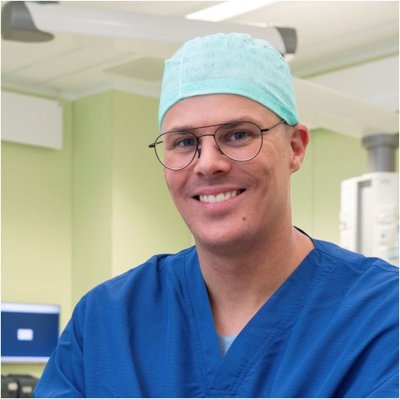High-tech surgery for hiatal hernia repair - Current state, new treatment options and future prospects
Rob Tolboom is a PhD student in the research group Robotics and Mechatronics. Supervisor is prof.dr. I.A.M.J. Broeders from the Faculty of Electrical Engineering, Mathematics and Computer Science and co-supervisor is dr. W.A. Draaisma from Jeroen Bosch Ziekenhuis 's-Hertogenbosch.
 The presence of a hiatal hernia and gastroesophageal reflux disease often presents with severe, disabling symptoms and is known to result into a poor quality-of-life for many patients. Nevertheless, it’s often seen by patients and physicians alike as an ailment to be treated by antacids, not as serious disease warranting surgery.
The presence of a hiatal hernia and gastroesophageal reflux disease often presents with severe, disabling symptoms and is known to result into a poor quality-of-life for many patients. Nevertheless, it’s often seen by patients and physicians alike as an ailment to be treated by antacids, not as serious disease warranting surgery.
While most hiatal hernia are straightforward, in some rare cases the pancreas herniates along with the other organs into the thoracic cavity. Little is known about how to proceed surgically. Furthermore, some patients are hindered in their daily life by symptoms of delayed gastric emptying. Antireflux surgery is known to enhance gastric emptying speeds in most cases. Some patients, however, see their gastric emptying worsened. The mechanism behind this phenomenon remains mostly unclear.
When a hiatal hernia recurs or symptoms persist following primary antireflux surgery, a whole battery of diagnostic tests are done to find the mechanism of failure and therefore also the optimal mode of treatment. We hypothesize that computed tomography (CT) scanning of the gastroesphageal junction offers sufficient information to classify the underlying mechanism of failure.
Current treatment of hiatal hernia is largely standardized in the Netherlands. Most centers perform partial laparoscopic fundoplications. Some centers, however, see benefits in using robotic assistance.
And finally, the question remains on how best to treat those patients with severe symptoms and poor quality-of-life following (multiple) previous failed antireflux surgeries and are currently left without any treatment options.
The aims of this thesis are to find out why the number of referrals for surgery remain lacking in the Netherlands, to describe our experience with intrathoracic herniation of the pancreas, to find the incidence of delayed gastric emptying in patients with large and small hiatal hernia, to describe the effects of surgery on gastric motility, to look at the value of CT-scanning in patients with recurrent disease, to look at the benefits of robotic assistance in primary and redo antireflux surgery, and to describe the development of a novel robot assisted transthoracic minimal-invasive approach for redo-antireflux surgery.
The studies presented in part I of this thesis have addressed the current practice of hiatal hernia surgery by delving into the reasons for general practitioners and gastroenterologists to withhold referral for their patients for antireflux surgery (chapter 2), describe our experiences on how to manage intrathoracic herniation of the pancreas (chapter 3), looked at the incidence of delayed gastric emptying in patients with hiatal hernia of all sizes and studied the effect of antireflux surgery on gastric motility (chapter 4), and determined the value of CT-scanning patients with failed antireflux surgery to determine the mechanism of failure (chapter 5).
In part II, general usage of robotic assistance in primary and redo antireflux surgery is discussed (chapter 6), a cohort study is presented comparing results of redo antireflux surgery before and after the introduction of the da Vinci® robot in our hospital (chapter 7), and long-term outcomes of robotic surgery are presented (chapter 8).
This was followed by part III, in which we presented an experimental study where we developed a novel robot-assisted transthoracic approach for desperate patients who until now were left without any possible treatment options (chapter 9).




